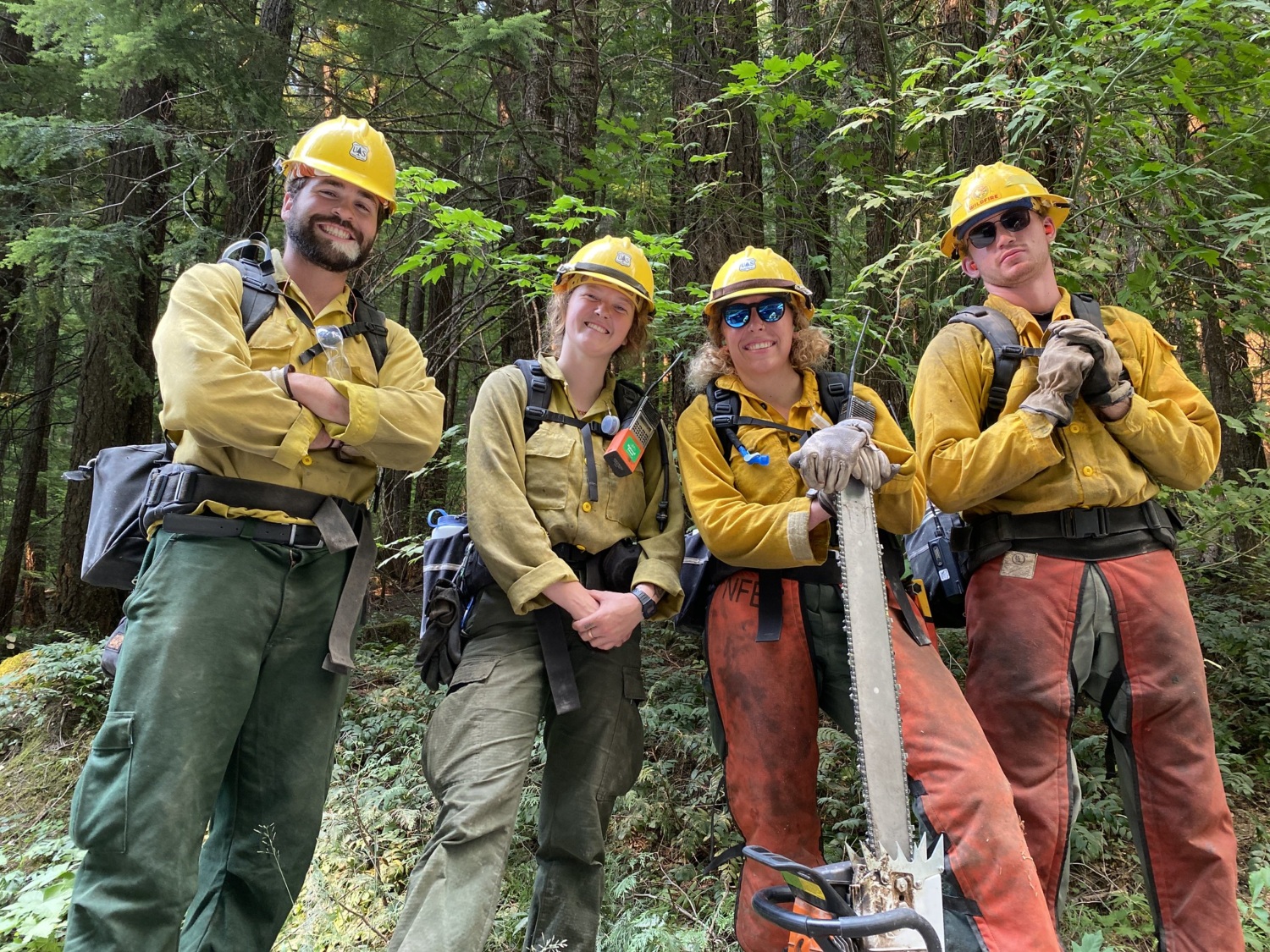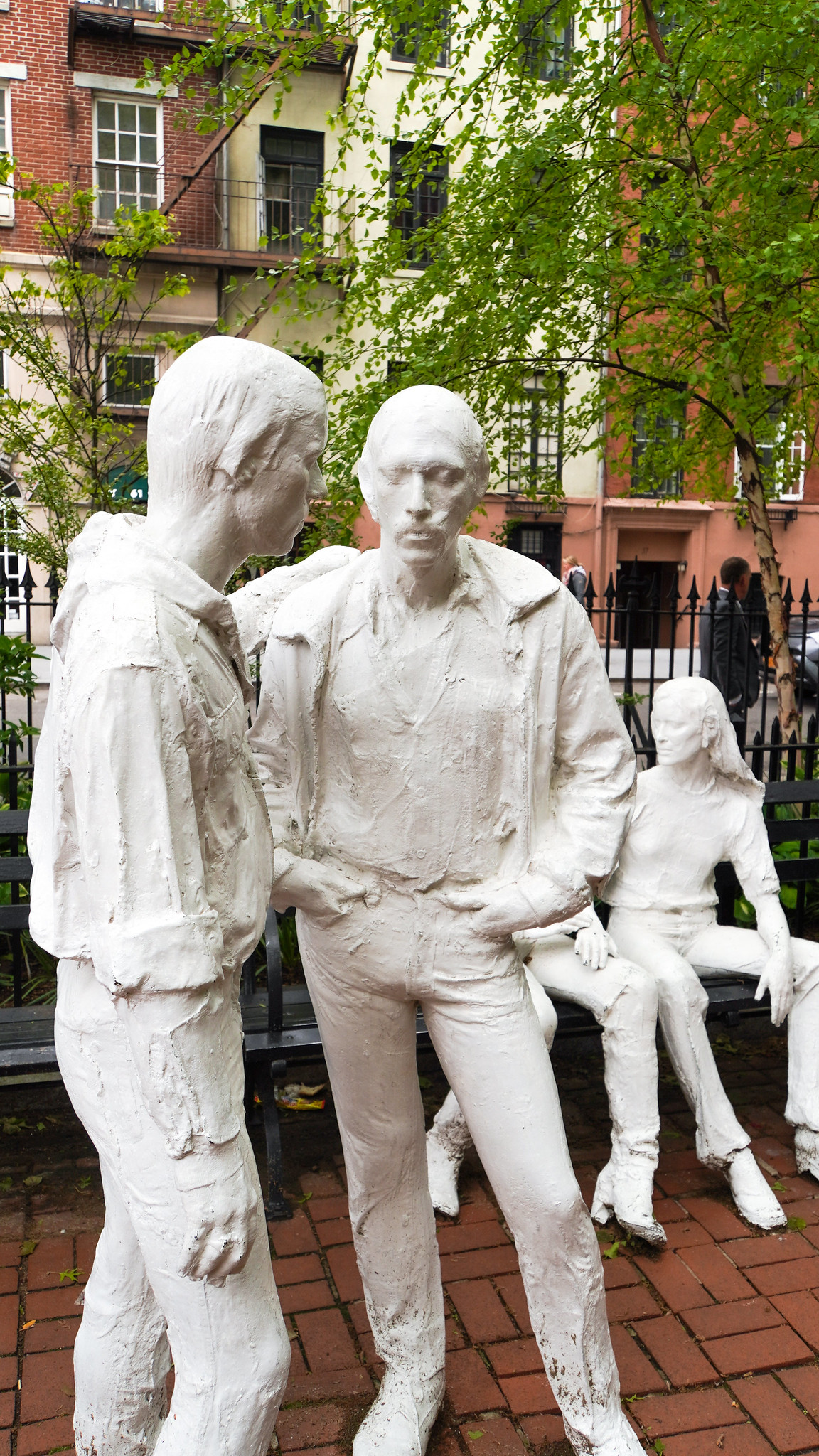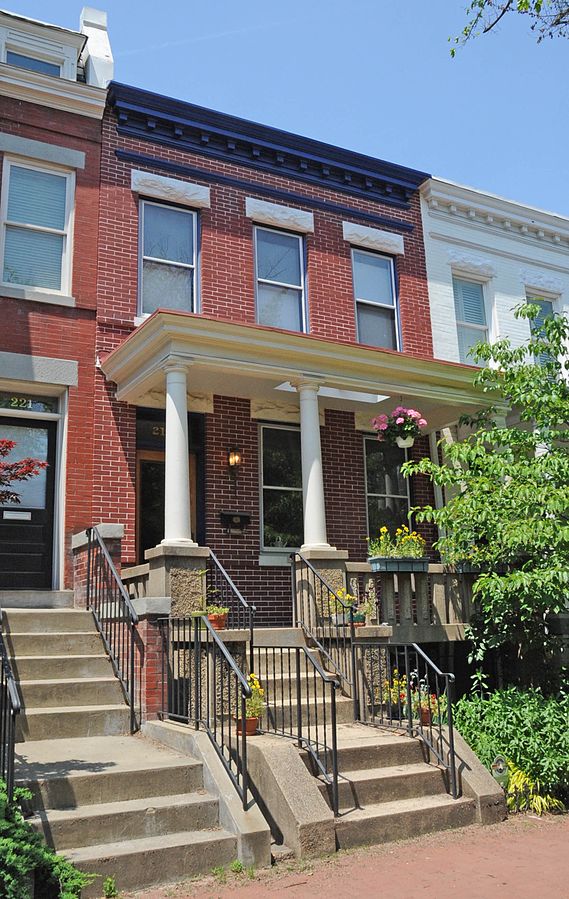
Good Climate News Roundup – March 2025
Mar 31, 2025
With grit and perseverance, LGBTQ+ activists in the United States have fought for decades for their rights, and continue to do so. Not only have they been integral for advancing and expanding protections for the LGBTQ+ community, but they have also been key players in other social and environmental justice movements. At the same time, they have confronted deep institutional and cultural discrimination. The LGBTQ+ community is a vital part of our country’s history, our present and our future.
To celebrate Pride Month, LCV is honoring LGBTQ+ history by highlighting some of these already protected national historic landmarks and monuments, while also recognizing that much work still needs to be done to properly honor the diverse stories and culture of the LGBTQ+ community.
A longer list of national monuments and historic landmarks recognizing LGBTQ+ history can be found on the National Parks Service website. The LGBTQ America HistoryPin project has also mapped a long list of sites with an LGBTQ+ history, many of which could be future national monuments and landmarks.

[Stonewall National Monument, National Parks Conservation Association]
Likely the most well known monument commemorating LGBTQ+ history is Stonewall National Monument in New York City. Designated as the first LGBTQ+ national monument in 2016 by former President Obama using the Antiquities Act, this landmark pays tribute to the activists who rose against police raids at The Stonewall Inn, a popular LGBTQ+ bar in 1969.

At the time, living openly as LGBTQ+ in the U.S. was heavily criminalized, and for one of the first times in history, patrons at Stonewall rioted in response to a police raid, demonstrating on the nearby streets and refusing to stand down for six days. Two of the most prominent activists of the Stonewall riots, Marsha P. Johnson and Sylvia Rivera, both transgender women of color, are memorialized at the monument. Their memorial is one of only a few dedicated to transgender people in this country.
The Stonewall uprising served as a catalyst for the long-standing LGBTQ+ liberation movement, galvanizing other activists in almost every major city to organize for their rights. Stonewall also memorializes the brutality of state-sanctioned violence that LGBTQ+ individuals faced and continue to be subjugated by, never letting us forget that LGBTQ+ rights were not given freely, but were a product of sustained activism and grassroots power.
Last week, the nonprofit Pride Live announced that the monument will be opening a Visitors Center in 2024 to further honor LGBTQ+ history and activism. A 15-part NPS video series about Stonewall can be found here.
[Above image: Stonewall National Monument, Ted Eytan, Flickr]

Located in New York City, this historical landmark honors the work of Bayard Rustin, an unsung civil rights and LGBTQ+ champion. Throughout his life, Rustin lived openly as a gay man who nonviolently advocated for Black and LGBTQ+ liberation, and it was in this New York City apartment that Rustin lived with his partner, Walter Naegle. In the 1950s and early 60s, Rustin served as the chief advisor to Dr. Martin Luther King, Jr., to whom he taught the philosophy of non-violence, as well as served as a lead organizer of the 1963 March on Washington for Jobs and Freedom, the site where Dr. King delivered his “I Have a Dream” speech. Despite his contributions, Rustin often faced discrimination from within the civil rights movement for his identity as a gay man, at many times forced to give up his leadership roles. His story reminds us of the ways LGBTQ+ people have been integral for advancing many social justice movements, while at the same time faced prejudice from within these spaces.
[Above image: Bayard Rustin at news briefing on the Civil Rights March on Washington in the Statler Hotel, Warren K. Leffler, Library of Congress]

[Gov. Malloy visits Pulse nightclub memorial in Orlando, Dannel Malloy, Flickr]
The Pulse nightclub national memorial pays tribute to the 49 LGBTQ+ lives lost during a horrific shooting at Pulse nightclub in Orlando, Florida in 2016. The shooting remains today the deadliest attack against LGBTQ+ people in U.S. history. In 2021, the Congressional LGBTQ+ Equality Caucus led the charge for officially memorializing the nightclub, which will open as a memorial and museum later in 2022. The tragedy of the Pulse nightclub shooting is a stark reminder that there is still much work left to be done towards creating a safe environment where LGBTQ+ individuals can live freely, openly, and safely.

The Furies Collective house, listed on the National Register in Washington D.C., served as the operational center for the Furies, a lesbian-feminist separatist group active in the early 1970s organizing to break away from male-dominated and heterosexual society. Some of the members were active in the greater Women’s Liberation movement of the time, but after realizing that the campaign was not inclusive of their lesbian identities, decided to create their own space of resistance to rally for lesbian rights. The majority of their work centered around their two publications – motive magazine, a Methodist Church youth magazine, and The Furies newspaper. Both sparked essential conversations regarding women’s identities and their relationship to other members of society.
[Above image: The Furies Collective, Washington D.C., Jerrye & Roy Klotz, M.D.]

[Henry Gerber House, Chicago, IL, Elisa Rolle]
The designation of Henry Gerber’s residence in Chicago as a national historical landmark recognizes his pioneering work elevating gay civil rights, decades before the movement grew to higher prominence. In 1924, Gerber founded the Society for Human Rights, the first gay rights organization in the country, for which his home served as the headquarters and meeting point. Before dissolving in 1925 due to a police raid seizing Gerber’s items, the Society published the earliest documented gay-oriented newsletter in the United States, as well as held lectures and advocated for the rights of gay individuals to political leaders. The preservation of Gerber’s home serves as a reminder that the LGBTQ+ movement has, for nearly a century, fought for civil rights.
Originally a Chicago native, Lorraine Hansberry was an influential Black lesbian writer and activist living in New York City. Through her play A Raisin in the Sun, Hansberry became the first Black woman to have a play performed on Broadway. Throughout her life, she privately explored her lesbian identify and contributed letters to The Ladder, a monthly lesbian newsletter by the Daughters of Bilitis. Hansberry also wrote four short stories centering the lesbian experience under her pen name, and later inspired Audre Lorde’s “I Am Your Sister: Black Women Organizing Across Sexualities.” Her New York residence was listed in the National Register of Historic Places in 2021.

[Edificio Comunidad de Orgullo Gay de Puerto Rico – San Juan Puerto Rico, Ian Poellet]
The Edificio Comunidad de Orgullo Gay de Puerto Rico in San Juan was the meeting hall of the first official gay and lesbian organization in Puerto Rico. Founded in 1974, the organization was inspired by the Stonewall Riots in New York City and used educational programs, public actions and political advocacy to pioneer the gay liberation movement of Puerto Rico and dismantle LGBTQ+ discrimination on the island.

Darcelle XV, originally known as the Foster Hotel, made history as one of only two known drag clubs opened before 1970. When the club opened in Portland, Oregon in 1969, drag largely took place behind closed doors due to discrimination and harassment. Since opening, Darcelle XV has been a powerhouse for displaying the richness of drag and LGBTQ+ culture by consistently featuring gay and transgender performers. Today, it continues to host eight drag queens for frequent shows, including its owner Darcelle, who is still an active performer and holds the world record as the World’s Oldest Performing Drag Queen. The location was listed in the National Register of Historic Places in 2020.
[Above image: Darcelle at Keller Fountain, Sarah Mirk]

The Japanese YWCA is unique in its connection to the LGBTQ+ rights movement, civil rights movement, and Japanese American Issei (first generation) women. Originally created to address the needs of a growing number of female Japanese immigrants, the Japanese YWCA was founded by Issei women in San Francisco, who were barred from using the facilities due to segregationist policies. When Japanese people were disturbingly forced into internment camps during WWII, the building was leased to the American Friends Service Committee, and under their stewardship, became the meeting place of the first annual convention of the Mattachine Society, an early gay rights organization. The building was also a prominent site of Bayard Rustin’s LGBTQ+ and civil rights organizing work. The many uses of the Japanese YWCA serve as a testament to how justice is interconnected across freedom struggles, and pays tribute to the many lives damaged throughout the collective fight for justice. It was listed in the National Register of Historic Places in 2020.
[Above image: “Mattachine Review,” 1950s, National Museum of American History Smithsonian Institution]

[Cherry Grove House, Leah Fallica]
Located on Fire Island, New York, the Cherry Grove Community House and Theater evolved into the first Gay and Lesbian Town in the U.S. The building was originally constructed by the Cherry Grove Property Owners Association to be used as a community house and, later, a theater. Collectively, the Association helped facilitate the gradual integration and acceptance of gay and lesbian community members into civic life. For many years, it was the only gay and lesbian town in the nation, operating in contrast to a country that was facing turbulent upheavals by the LGBTQ+ rights movement. It was listed in the National Register of Historic Places in 2013.
The Little Bighorn battlefield was the site of important cultural practices involving Indigenous two spirit people. The Battle of Little Bighorn, also known as Custer’s Last Stand, was fought by the Lakota Sioux and Cheyenne peoples against invading U.S. army troops in 1876. Led by Crazy Horse and Sitting Bull, Indigenous troops overwhelmed U.S. forces, and Cheyenne male two spirits (he’emane’o) played special roles in celebrating the victory. Two-spirit is an English term adopted from the Ojibwe language in Winnipeg, Manitoba referring to Indigenous people who are not strictly male or female, but hold a distinct alternative gender. For centuries, many Indigenous nations have recognized a diverse range of genders, including two spirit females, two spirit males and transgender people. Often, two spirits held specialized and integral roles in Indigenous society.
The monument does not expressly pay tribute to the he’emane’o, but the NPS acknowledges this history on their website. A longer list of the untold history of Indigenous two spirited people national historical sites can be found here. These stories highlight how transgender, non-binary, gender non-conforming, and two spirited people have always existed and played an important role in history.
***
Through these national landmarks, our country has begun to tell a more inclusive story of our history that honors LGBTQ+ experiences and recognizes their pivotal role in advancing justice. Yet, there still remains work to do in recognizing the contributions and deeply rooted history of LGBTQ+ people in our nation. Today, less than 30 LGBTQ+ historical sites have been recognized under the national register of historical places out of a growing list of over 90,000 total sites. There are even fewer sites recognizing the contributions of LGBTQ+ people of color, disabled, transgender, non-binary, gender non-conforming and two spirited people. These individuals have been critical to expanding the scope of intersectionality across various social and civil rights movements, yet often go unrecognized.
As we celebrate Pride Month, LCV encourages you to continue reading and learning about the rich LGBTQ+ history throughout our nation. To find historical significant sites close to your community, use the map here.